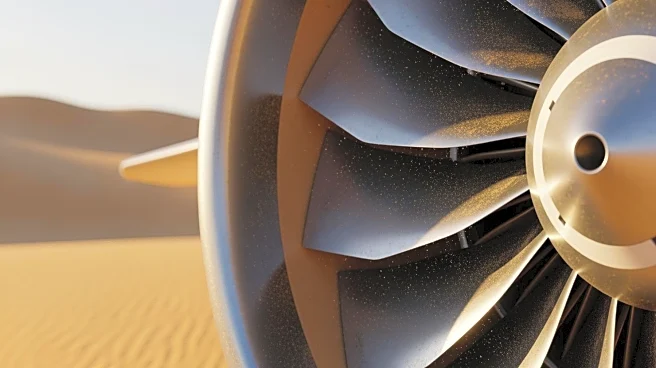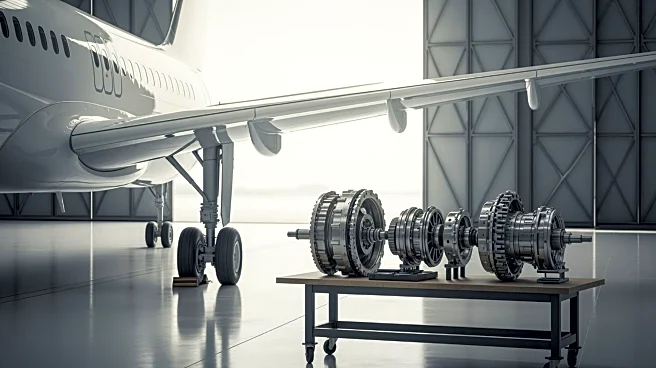What's Happening?
Rolls-Royce is nearing the completion of a critical phase of dust-ingestion tests for its Trent XWB-97 engine, used in the Airbus A350-1000. Conducted at the company's Derby site in England, these tests focus on improving the high-pressure turbine blade
and related hot-section systems to counter durability issues caused by atmospheric particulates in the Middle East. The initiative aims to double the engine's time on wing in harsh environments and improve performance by 50% in more benign conditions. The current phase, part of a four-year effort launched in 2023, is expected to achieve certification by 2027 and enter service by 2028.
Why It's Important?
The successful completion of these tests is significant for Rolls-Royce as it addresses the durability challenges posed by the harsh operating conditions in the Middle East. By enhancing the engine's resilience to dust-related issues, Rolls-Royce aims to improve operational efficiency and reduce maintenance costs for airlines operating in the region. This development not only strengthens Rolls-Royce's position in the aerospace market but also supports future sales campaigns for the A350-1000 in the Gulf, potentially increasing its market share in a competitive industry.
What's Next?
Rolls-Royce plans further testing in 2026 to refine design changes, particularly focusing on blade cooling patterns and conducting flight tests of the updated engine configuration. These tests will ensure that modifications do not adversely affect engine operability, maintaining performance standards while optimizing for durability. The company aims to make these improvements seamless for pilots and airframers, ensuring that the enhancements do not introduce new operational challenges.
Beyond the Headlines
The advancements in the Trent XWB-97 engine reflect broader trends in aerospace engineering, where manufacturers are increasingly focusing on durability and efficiency in challenging environments. This shift is driven by the need to reduce operational costs and improve sustainability in the aviation industry. The successful implementation of these upgrades could set a precedent for future engine designs, emphasizing the importance of adaptability to diverse environmental conditions.
















